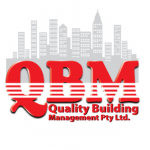Asbestos exposure has serious health consequences that should not be taken for granted. As such, clear asbestos plans should be outlined to handle the mineral to avoid inhaling the airborne fibres and contaminating areas in the process. Your asbestos plans should comply with the Australian legislation in your state to avoid legal retribution. The “Model Work Health and Safety Bill 2011” commenced operation on 1 January 2012 in Australia. This Act brings into force the “Model Work Health and Safety Regulations” and “How to Manage and Control Asbestos in the Workplace” Code of Practice.
How Should You Handle Asbestos?
Asbestos can either be controlled or disposed of. The decision you make will depend on the condition of the asbestos when it is being assessed or any possible deterioration/changes that could occur in the future. If you have never handled asbestos, then you should contract a competent person to provide guidance. Friable or badly deteriorated non-friable asbestos should be disposed of. Only a competent professional with Class A licence should handle friable asbestos. Non-friable asbestos that is undamaged can be controlled.
It should be noted that DIY individuals can only handle non-friable asbestos that is less than 10m2. Drilling, water blasting, sanding, and any other dust-operation are strictly forbidden. The methods you adopt should generate minimal dust and should not contaminate the soil in the process.
All workplaces constructed prior to 2004 must have an asbestos register and an asbestos management plan. Testing is performed to ensure that the information about the location and type of asbestos is accurate, thus making is easier to implement the appropriate control measures in certain areas. The risk assessment conducted by an asbestos assessor is also affected by the presence of ACMs.
Where to Start?
Knowing where asbestos is located or getting a competent person to evaluate such location is the first step to have an action plan for asbestos. Asbestos was widely used as an insulation material in the past, and can still be found in numerous electrical and fire installations. Wall fitting, flooring, roofing materials, and pipes are just some of the possible places to find asbestos containing materials (ACMs).
When you have located all the possible areas that asbestos can be located, then the next step is to plan how you intend to handle the mineral. You should ensure that all your plans revolve around minimal exposure and safety. This can be accomplished by wearing personal protection equipment, using the appropriate signage to alert others and outlining a detailed methodology whilst controlling or removing. The key is to always ensure that your decisions and actions comply with legislation.

